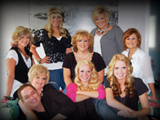Lonesome Dove-Hopkins County Connection...did you know that this historical event originated here?
By J Harold Utley, Hopkins County Historian.
Oliver Loving was born in Hopkins County on December 4, 1812. He was the second of nine children of Joseph and Susannah Mary (Polly) Bourland Loving. Oliver and his older brother James married sisters, Susan and Margaret Morgan. Their father, John Morgan, was the first representative from Muhlenberg County in the Kentucky Legislature.
In 1843, Oliver, his wife Susan, brother James and his wife Margaret, and their sister Eveline and her husband, Ellis Littlepage, and their children departed Hopkins County for the Republic of Texas.
They pushed off in a flatboat on Pond River at Free Henry Ford. Their journey took them down Pond River to Green River, down Green River to the Ohio River, down the Ohio River to the Mississippi River, down the Mississippi River to the Red River, up the Red River to Shreveport, Louisiana. At Shreveport they purchased wagons and teams of oxen. From there they traveled about 140 miles to what is now Lamar County, Texas.
After about a year in Lamar County, they felt it was becoming overcrowded. Both Loving families moved to Dallas County. The James Loving family settled there permanently. They were the 16th white family to make Dallas their home. Oliver moved to adjacent Collin County where he went into the freight business. He hauled supplies from as far away as Houston.
In 1855, the urge to move on struck Oliver again and he moved his family to a valley in Palo Pinto County. Few white settlers were in this country, still inhabited by hostile Indians. Later a shaky peace was reached and white settlers appeared in the winding valley cur by the winding Brazos River.
By now Oliver’s family had grown to nine children, three more having been born in Collins County. Oliver had opened a small store, the second in the area. About the same time, he entered the cattle business and began seeking new markets.
Oliver and his neighbor, John Durkee, are often credited with driving the first cattle north out of Texas bound for the east. Oliver deserves credit for organizing the drive but it was his nineteen-year-old son, Will that made the drive as Trail Boss. In a letter written by Will to his father from Christian County, Illinois, he reported the cattle had sold “tolerable well” at $38 per head, with an expense of $2 per head, for a net profit of $5,000.
The next known drive of Oliver’s was to Denver, Colorado in 1860. Oliver did make the drive but may have wished he had not. Gold had been discovered in Colorado. A herd of 1,500 head of cattle were driven through Indian territory, up the Little Arkansas River to the Santa Fe Trail and on to Denver. He sold the cattle for a good profit, collecting in gold dust.
When Loving reached Denver the Civil War had broken out, and as a citizen of the secessionist State of Texas, he was detained by federal authorities. Through the intercession of friends, among them-among them, legend has it, Kit Carson-he was allowed to return home.
His great-granddaughter, Madeline Loving Roach Meyercord, described his return home: “With an utter lack of fear, he set out for Texas alone, his small trunk of gold dust under the seat of his wagon. As a gesture of caution, he wore old clothes and drove an ill assorted team.”
Oliver Loving’s Ranch House (drawn in 1955 before being burned)
Arriving at his home spread, now called “Loving’s Valley” he found that the peace with the Indians had ended and the Indian raids had driven the settlers, including his family, into Weatherford, where they lived in a single house.
The Civil War now made it impossible to drive cattle north out of Texas. Loving had the apparent good luck of winning a contract to supply meat to the Confederate Army. Throughout the war, he supplied herds along the Mississippi. However, the army’s ability to consume exceeded the ability to pay and by war’s end, the Confederate States of America owed Loving more than $100,000.
Saddled with a debt he could never collect, Loving again looked to the Denver market, but vicious outlaws and hostile Indians blocked all the familiar trail to the north. It was then, in June 1866, he met Charles Goodnight, a thirty-year-old cattleman and former Texas Ranger. During the war Goodnight had gained considerable experience in West Texas and New Mexico Territory. On the spot, with a handshake, they formed a partnership that would last a little more than a year. This partnership joined their name permanently in Texas history.
Charles Goodnight, born in Illinois, at age nine, migrated to Texas with his widowed mother and stepfather, settling in the state two years after the Lovings.
Goodnight knew beef was scarce in New Mexico and brought high prices. At the time, there were many soldiers at army forts and reservation Indians. The two partners and eighteen cowpunchers started the drive over the Butterfield Stage route. It was on this drive that Goodnight created the “Chuck Wagon.” At the rear of the wagon was the chuck box with a door that dropped down for the worktable.
Holding to the south to avoid the Comanche Indians, Loving and Goodnight forced the herd to travel eighty miles in three days, without water, over the Staked Plains to the Horsehead Crossing on the Pecos River. From here they trailed north to Ft Sumner. The drive paid off far better than either partner had hoped. Although the government agent did not buy all the cattle, he paid eight cents per pound on the hoof for the longhorns.
While Goodnight returned to Texas with the $12,000 in gold to buy more cattle, Loving headed north to Colorado with the unsold cattle. At Raton Pass, New Mexico, a tollgate stopped Loving. He had to pay ten cents per cow to pass. The next year Goodnight, with another herd, was forced to pay the same toll.
The partnership of Loving and Goodnight came to a tragic end in 1867. At Horsehead Crossing on the Pecos River, Comanches attacked the herd, stampeding the cattle. After a wild night of confusion, the cattle were found in two parts, with Indians on all sides.
Because of the expected delay in rounding up the cattle, Loving and “One-arm Bill” Wilson started toward Ft Sumner to notify the government agents that the cattle would be late. Riding at night and hiding during the day, the two men made good time. At noon on the third day, Loving suggested that they ride, as they had seen no sign of Indians.
After about ten miles, a band of Comanche Indians came swarming at them. The two men took cover in a brush-lined ditch near the river. Both men were armed with six-shooters, “One-arm Bill” Wilson had a Colt six shot revolving rifle and Loving had a fifteen shot “Henry Repeater” rifle.
Near dark an Indian calls out in Spanish, asking to parlay. Suspicious, Wilson agreed to come out, while being covered by Loving with the Henry. As Wilson stepped out to meet the warrior, a bullet crashes through Loving’s wrist and into his side. Ads the battle raged, Loving attempted to stop the flow of blood. The Indians fired arrows high into the air to fall on the two men, creating mortar-type indirect fire that failed to hit either man. Running low on arrows, the Indians resorted to throwing large rocks into the ditch.
During the night, Loving, weak from the loss of blood, persuaded Wilson to attempt to escape and try to reach Goodnight. Wilson agrees and leaves his revolver and rifle for Loving. He takes only the Henry and metallic cartridges, as he plans to swim underwater past the Indians. Wilson succeeded in evading the Indians and three torturous days later he reaches the Goodnight camp. Fearing the worst, Goodnight and five volunteers set out to find Loving-or his remains.
But Loving is alive! For two days he held off the attacking Indians. When the wound in his side begins to heal, he slips upstream after dark and reaches a trail crossing. Loving pays a German and three Mexicans $250 to take him to Ft Sumner where he receives treatment, food and rest.
Goodnight and the rescue party reach the place of the battle but find no Indians or Loving. Deciding that Loving had perished they return to the herd and continue the drive to toward Fort Sumner. On the way, a rider from Fort Sumner tells Goodnight that Loving is alive and well at the fort.
When Goodnight arrived at the fort, he was met by Loving, his arm in a sling. The happy reunion was short lived as Gangrene was affecting Loving’s arm. The arm as amputated at the elbow. Loving appeared to be on the road to recovery but an artery broke and again Loving was in serious trouble.
Goodnight sent a man on relays of horses to Las Vegas, New Mexico for a trained surgeon. But nothing could save Loving. After securing a promise from Charles Goodnight that his body would be returned to Texas, Oliver Loving died on September 25, 1867.
Goodnight ordered his cowboys to collect empty oil cans from the fort’s dumping ground. The cans were flattened and soldered together to make a crude coffin. Loving’s body was packed in salt and charcoal and returned to Texas over the trail he and Goodnight had blazed.
Thus ended the career of the Hopkins County native turned cowboy. Years later, Larry McMurtry wrote his epic novel “Lonesome Dove” based loosely on the lives of Oliver Loving and Charles Goodnight.
In 1936, the State of Texas erected a marker on Oliver Loving’s 1855 home site in Loving’s Valley, near the small town of Loving. A Texas county, joining the south borderline of New Mexico is named for Loving. The county covers about 673 square miles and has 107 people.
The Loving-Goodnight Cattle Trail
Markers placed at Oliver Loving’s grave
City Cemetery, Weatherford TX.
(Photo, Robert Duval as Augustus McCrae based on the live of Oliver Loving, and Tommy Lee Jones as Woodrow Call based on the life of Charles Goodnight )
For additional reading see:
Fourteenth Annual Yearbook – Historical Society of Hopkins County.
Charles Goodnight – Cowman & Plainsman – J Evetts Haley
The Loving Family in America – Carl & May Read
The Loneliest County – Reader’s Digest – May 1993
Centennial – James A Michener
The American West – Dee Brown
By, J. Harold Utley, Hopkins County Historical Society Historian and released to iSurfHopkinsCo for publication.
iSurf Local News & Community Information, Madisonville - Hopkins County Kentucky.
Homepage http://isurfhopkinsco.com
























































